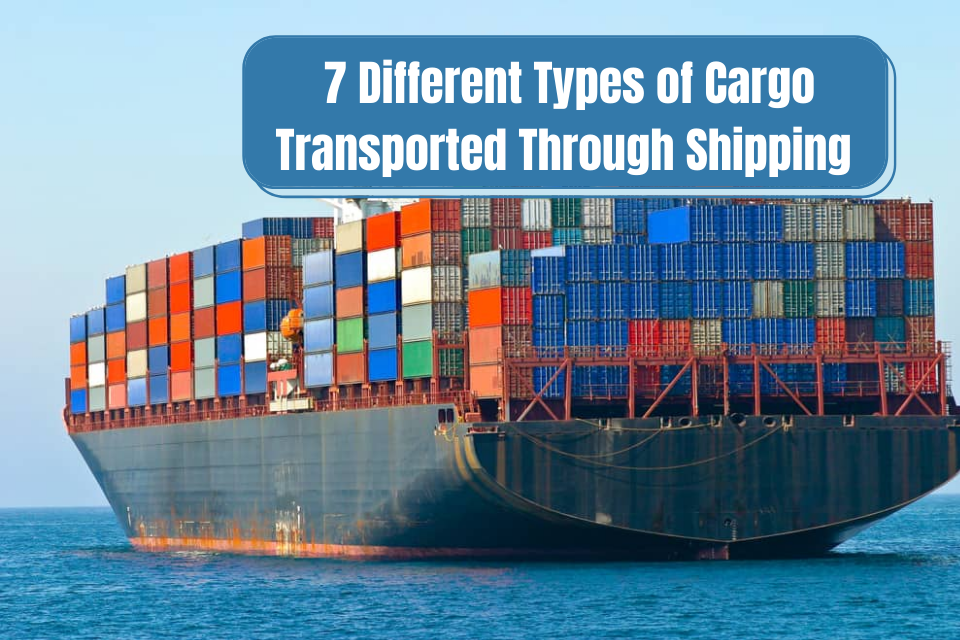Cargo refers to goods that are transported from one location to another via various mediums of transportation like air, water, and land. From food to oil to large pieces of equipment, goods are transported worldwide through shipping now.
In this post, we’ll be looking at the different types of cargo that are transported through shipping. Let’s dive in!
- Container Cargo
As the name suggests, Container cargo are cargo that is transported in containers making use of intermodal transportation. The capacity of these containers is massive; hence huge amount of goods can be transported easily.
The container cargo usually consists of goods like electronics, clothing, toys, and items similar to that. Container cargo is usually loaded/unloaded on ships with the help of machinery.
The size of the containers used in transporting the cargo is usually fixed, which comes with its own convenience perks.
- Liquid Bulk
Just like container cargo, the name of this cargo speaks for itself. Liquid bulk cargo contains goods that are liquid in nature and shipped in bulk. Usually transported by ships, liquid bulk is an important cargo type; the main reason is that most liquid bulk cargo has crucial economic and domestic significance.
Liquid bulk cargo usually contains fuels and other crucial oils. Crude oil, vegetable oil, alcoholic beverages, petrol, and even unprocessed beverages make up a liquid bulk cargo. Shipping is the ideal and preferred method of transportation for liquid bulk.
Since liquid cargo is highly unstable and risky, the entire cargo hold is double-shelled and has a double bottom to prevent cargo leakage in case of any collision.
- Dry Bulk
Materials important for construction purposes like sand and cement and other important materials like grains, iron ores, coals, and even edible stuff like salt and sugar make up dry bulk cargo.
Dry bulk cargo are not packaged and are usually transported in large quantities. They are loaded/unloaded in and from the hold of a ship. Wagons and lorries also play an important role in their transportation. The food and infrastructure industry, both of them are highly dependent on this cargo type for smooth functionality.
- Breakbulk
Breakbulk cargo stands for goods that cannot fit in standard-sized shipping containers or cargo bins. Instead, the load is transported in bags, boxes, crates, barrels, other handling equipment.
Cargo like wood, paper, unprocessed metallic materials, steel rolls, etc make up the breakbulk cargo. They are mostly packed in crates or racks which makes them easier to move around while loading and unloading. Breakbulk cargo is rather easy to deal with in most cases. The convenient part about breakbulk cargo is that we rarely face any issues while transporting the goods.
- Livestock
Livestock cargo contains livestock that includes alive animals. Livestock and animals are some of the most commonly transported cargo between many countries. Intensive care has to be taken when transporting livestock cargo as they need ample maintenance during the whole process.
On one hand, while transporting livestock may seem a rather easy task, taking care of them throughout the process is the harder part. Important aspects when it comes to the livestock cargo include taking care of their health and nutrition needs. Also, the livestock has to be cleaned regularly, and proper ventilation should be ensured during transportation.
- Ro-ro
Ro-ro stands for roll on/roll off. In terms of significance, it won’t be wrong to say that this is one of the most important types of cargo. Ro-ro cargo is basically cargo that contains goods that can be loaded/unloaded with the help of the principle of rolling.
You may have guessed it already; we’re talking about vehicles. Ro-ro is used to transport vehicles of all sizes and types. These include cars, motorbikes, vans, buses, trucks, tractors, even JCBs. Regardless of how big the vehicles are, Ro-ro ships can be used to transport the vehicles all across the globe.
- Refrigerated cargo
Packaged and frozen foods are perishable in nature, making them one of the riskiest and difficult goods to transport.
Due to the short life and high possibility of decay, refrigerated ships, also known as reefer vessels, are used to transport such food items. The reefer ships have specially built temperature controlling features to help the cargo last longer, which keeps the goods safe and intact.
Meat, fish, dry vegetables and fruits are the most common stuff we see in refrigerated cargo. Reefer ships are manufactured especially for the transportation of refrigerated cargo.
Related Reading:



